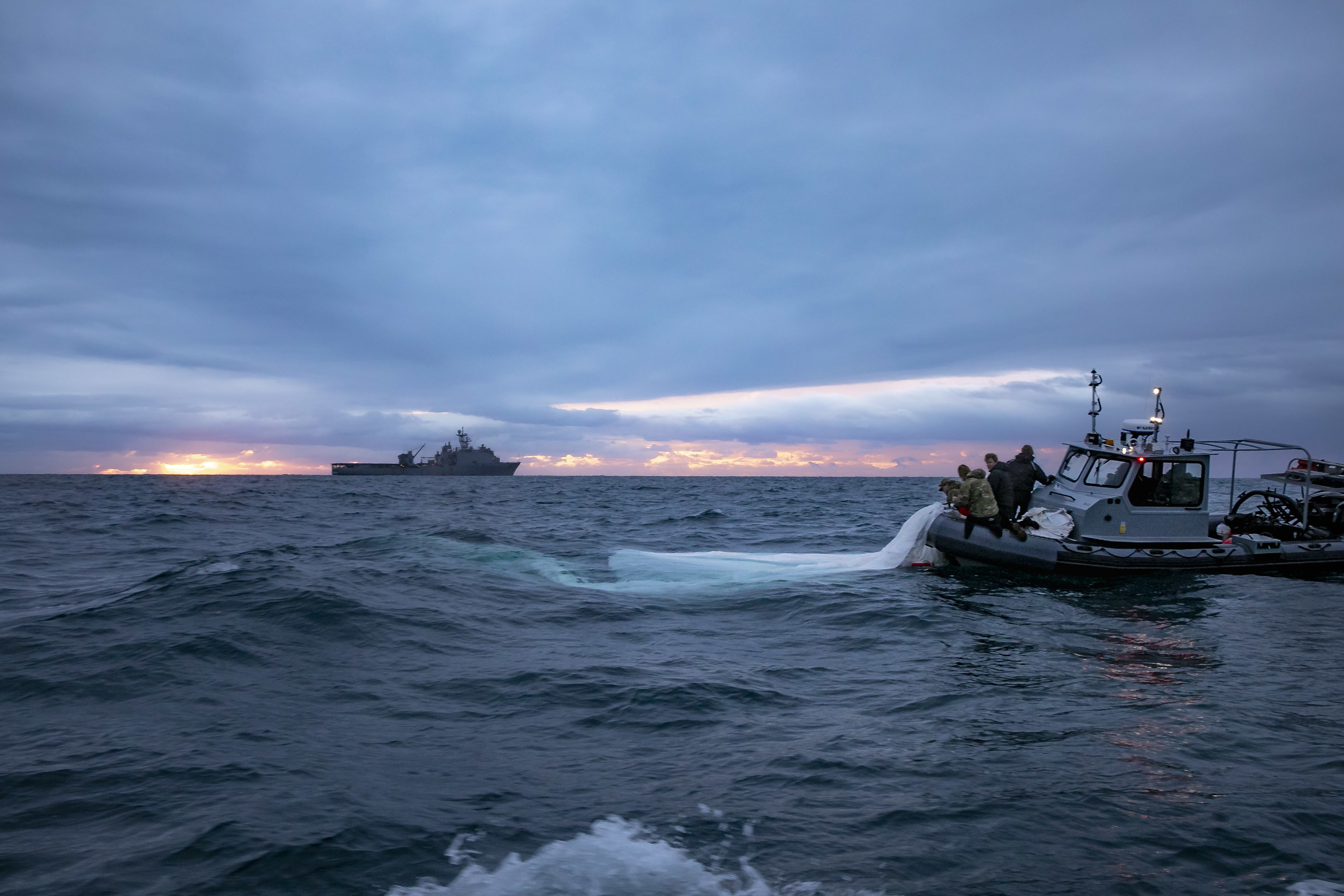US military begins recovering Chinese spy balloon debris (photos)

The U.S. military has gotten its hands on some pieces of the Chinese spy balloon.
An F-22 fighter jet shot down the Chinese balloon with a Sidewinder missile on Saturday (Feb. 4) just off the coast of Myrtle Beach, South Carolina, Department of Defense (DOD) officials said.
Pieces of the airship rained down into water a mere 47 feet (14 meters) or so deep, making recovery of the debris quite feasible. Indeed, teams dispatched to the area managed to haul the tattered balloon's huge white envelope out of the sea on Sunday (Feb. 5), as photos posted by the DOD show.
Related: Previous Chinese spy balloons over US were classified as UFOs: report

But rough seas on Sunday pushed the start of comprehensive recovery operations to Monday morning (Feb. 6), according to a DOD press release.
Participants in the recovery operation are taking precautions in case explosive or toxic substances are present in the balloon debris, the release stated, citing Air Force Gen. Glen D. VanHerck, commander of the North American Aerospace Defense Command and U.S. Northern Command.
"Due to changing ocean currents, it's possible that some debris could escape notice and wash ashore," the release stated. "VanHerck said members of the public can assist by informing local law enforcement personnel if they spot remnants of the balloon; they should not collect it themselves."
Breaking space news, the latest updates on rocket launches, skywatching events and more!
The balloon was first detected crossing into American airspace on Jan. 28, near Alaska's Aleutian islands, DOD officials have said. It crossed into Canada, then cruised back into the United States over Idaho and headed southeast across the nation from there.
On Feb. 1, President Joe Biden ordered the military to destroy the balloon as soon as it could do so without endangering people and infrastructure on the ground, according to military officials. That moment didn't come until Saturday.
The military was able to study the balloon in detail during its leisurely flight through American airspace, DOD officials have said. But recovering and scrutinizing pieces of the balloon could shed even more light on Chinese surveillance technology.
There should be a lot to find. The balloon envelope was about 200 feet (60 meters) tall when inflated, and it hauled aloft a truss structure outfitted with large solar panels and (presumably) a variety of instruments.
Chinese officials have claimed that the airship was an innocuous meteorological balloon that got blown off course accidentally, but U.S. officials have dismissed that explanation.
Mike Wall is the author of "Out There" (Grand Central Publishing, 2018; illustrated by Karl Tate), a book about the search for alien life. Follow him on Twitter @michaeldwall. Follow us @Spacedotcom, or on Facebook and Instagram.

Michael Wall is a Senior Space Writer with Space.com and joined the team in 2010. He primarily covers exoplanets, spaceflight and military space, but has been known to dabble in the space art beat. His book about the search for alien life, "Out There," was published on Nov. 13, 2018. Before becoming a science writer, Michael worked as a herpetologist and wildlife biologist. He has a Ph.D. in evolutionary biology from the University of Sydney, Australia, a bachelor's degree from the University of Arizona, and a graduate certificate in science writing from the University of California, Santa Cruz. To find out what his latest project is, you can follow Michael on Twitter.

